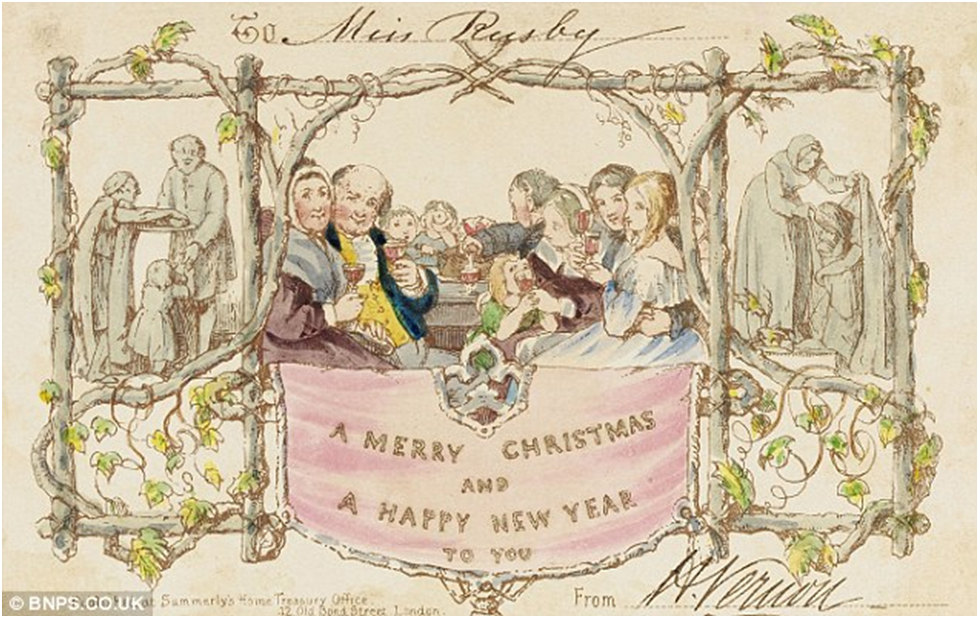History of the Christmas Card
- Jeff Greene
- Dec 4, 2021
- 2 min read
Sir Henry Cole, a patron of the arts with a large social circle in early Victorian England, was getting too much mail. The custom in England at the time was letter writing for Christmas and New Year’s. By 1843 the British postal system implemented the “Penny Post.” This allowed any letter or card could be sent anywhere in the country by using a penny stamp.
Sir Cole, who founded the Victoria and Albert Museum in London, kept busy and had little time to answer all the correspondences he was now receiving. Add the fact that it was considered impolite not to do so.
So one day he got with an artist friend, J.C. Horsley. Horsley sketched a family around a table celebrating the holidays. At the top, was a simple “TO:_____” and a salutation of “A Merry Christmas and A Happy New Year To You.” He printed a thousand copies on a piece of stiff cardboard.

This became known as the first Christmas card.
This first card that originated in the United States was in 1875, by Prussian immigrant, Louis Prang. He owned a print shop near Boston but his card was a painting of a flower and simply read “Merry Christmas.”
But these were more of what we know of as postcards and not your typical greeting card we send today.
This arguably started in 1915, from a postcard company, which had fallen on hard times. Started by Joyce Hall and later joined by her brothers Rollie and William, The Hall Brothers Company created a new format of cards because they found that people didn’t have enough room to write everything they wanted on a postcard. So they created the 4 inches wide, 6 inches high, folded once card that could be inserted into an envelope. A decade later they changed their company name to Hallmark.





Comments